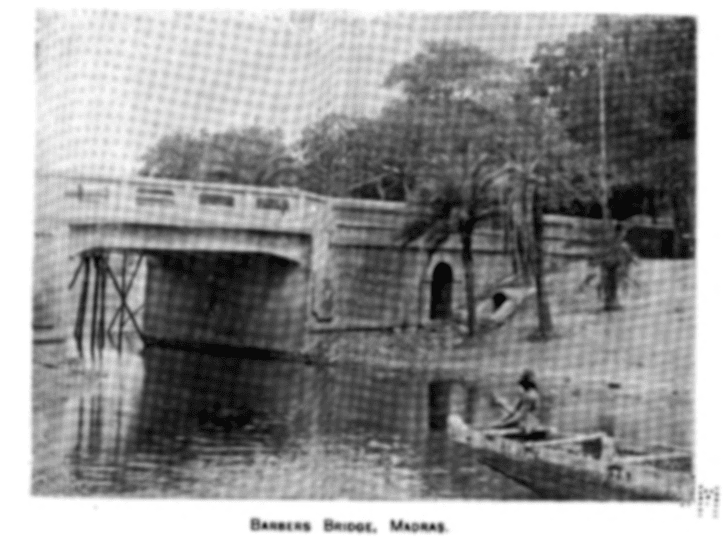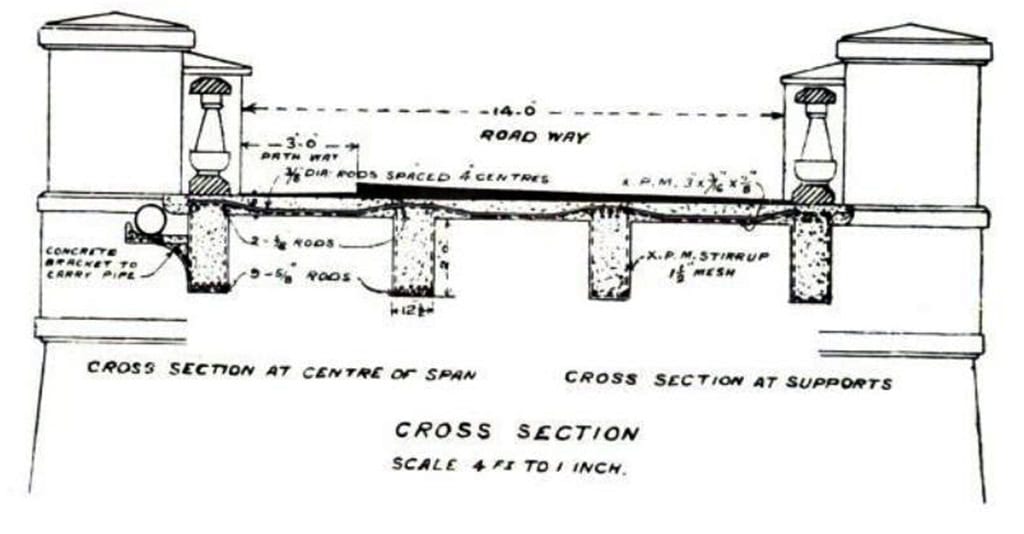 One of the oft-repeated legends of our city is that of the Hamilton Bridge in Mylapore and its subsequent renaming. If it was indeed Hamilton Bridge at first, we can find its supposed corruption in Tamil as Ummutton Varavathy as early as in 1867, in a record of the London Gazette. This legend of the name undergoing a transformation, thanks to the word Hamilton being too hard to pronounce by the local populace, also finds a place in publications from the era such as the Census of the Town of Madras, 1871 (published in 1873). By this time, the bridge had moved on to its next avatar, supposedly leading from the Tamil version and had come to be known as Barbers Bridge in official records. But none of these documentations are exactly clear as to who the Hamilton in question was. However, that there was a bridge in the location as early as the 17th century is evidenced by the fact that HD Love, in his Vestiges of Old Madras, Vol 1, makes a reference to the same in connection with the second siege of San Thome by the French, in 1675.
One of the oft-repeated legends of our city is that of the Hamilton Bridge in Mylapore and its subsequent renaming. If it was indeed Hamilton Bridge at first, we can find its supposed corruption in Tamil as Ummutton Varavathy as early as in 1867, in a record of the London Gazette. This legend of the name undergoing a transformation, thanks to the word Hamilton being too hard to pronounce by the local populace, also finds a place in publications from the era such as the Census of the Town of Madras, 1871 (published in 1873). By this time, the bridge had moved on to its next avatar, supposedly leading from the Tamil version and had come to be known as Barbers Bridge in official records. But none of these documentations are exactly clear as to who the Hamilton in question was. However, that there was a bridge in the location as early as the 17th century is evidenced by the fact that HD Love, in his Vestiges of Old Madras, Vol 1, makes a reference to the same in connection with the second siege of San Thome by the French, in 1675.

A serendipitous search on the internet threw up a very interesting revelation about the bridge, courtesy the Indian Engineering Journal, in its issue dated September 1, 1906. A note published under the title “Barbers Bridge, Madras” gives the technical details of a “new superstructure erected on the abutments of the old bridge”. (Whether this was the old bridge referred to by HD Love is not clear). It states that the new bridge was intended to carry a steam road roller. It had only one span, 28 feet clear and was designed and built by Marshland, Price and Co of Bombay. It was built using reinforced concrete, and the journal mentions that it was claimed to be the first reinforced concrete road bridge in India. The note was accompanied by a plate of its section and a lovely photograph of the bridge soon after its construction.
While the above claim is not readily verifiable, there is no doubt that with a history going back to at least 350 years, the bridge (demolished and rebuilt sometime in the 1960s and subsequently renamed as Dr Ambedkar Bridge), would be one of the oldest locations of man-made public infrastructure in continuous use in the city.